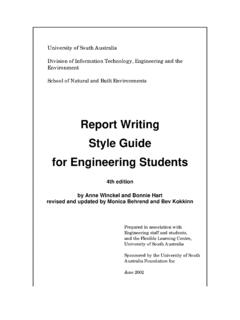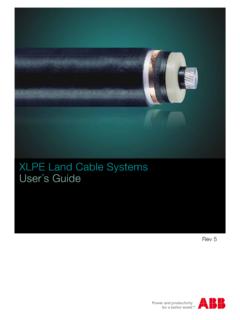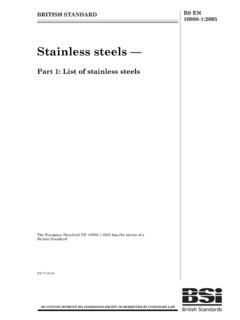Transcription of Functional Skills Criteria for Mathematics
1 Functional Skills Criteria for Mathematics Entry 1, Entry 2, Entry 3, Level 1 and Level 2 September 2011 Ofqual/11/4953 Functional Skills Criteria for Mathematics Ofqual 2011 1 Contents The Criteria .. 2 Introduction .. 2 Skill standards and assessment weightings .. 3 Entry 1 .. 3 Entry 2 .. 4 Entry 3 .. 5 Level 1 .. 6 Level 2 .. 7 Scheme of assessment .. 8 Functional Skills Criteria for Mathematics Ofqual 2011 2 The Criteria Introduction 1. Functional Skills qualifications in Mathematics assess three interrelated process Skills : Representing selecting the Mathematics and information to model a situation Analysing processing and using Mathematics Interpreting interpreting and communicating the results of the analysis Learners recognise that a situation has aspects that can be represented using Mathematics Learners make an initial model of a situation using suitable forms of representation Learners decide on the methods, operations and tools, including information and communication technology (ICT), to use in a situation Learners select the mathematical information to use.
2 Learners use appropriate mathematical procedures Learners examine patterns and relationships Learners change values and assumptions or adjust relationships to see the effects on answers in models Learners find results and solutions. Learners interpret results and solutions Learners draw conclusions in light of situations Learners consider the appropriateness and accuracy of results and conclusions Learners choose appropriate language and forms of presentation to communicate results and solutions. 2. Functional Skills qualifications in Mathematics are available at Entry 1, Entry 2, Entry 3, level 1 and level 2.
3 The Criteria for these qualifications specify the requirements in terms of skill standards and coverage and range at each level. At each level of the qualification, these subsume the previous level s skill standards and the indicative coverage and range, supporting a progression-based suite of Skills qualifications. The coverage and range statements provide Functional Skills Criteria for Mathematics Ofqual 2011 3 an indication of the type of mathematical content learners are expected to apply in Functional contexts; however, relevant content could also be drawn from equivalent National Curriculum levels and Adult Numeracy standards .
4 3. These Criteria should be used in conjunction with the Functional Skills Qualifications Criteria publication, which includes the Criteria common to all Functional Skills qualifications, and the controlled assessment regulations for the qualifications: Controlled Assessment Regulations for Functional Skills : Entry 1, Entry 2 and Entry 3 in English, Mathematics and ICT; English speaking, Listening and Communication at Entry 1, Entry 2, Entry 3, Level 1 and Level 2. Skill standards and assessment weightings 4. Functional Skills qualifications in Mathematics must require learners to demonstrate their ability in relation to: Entry 1 Skill standards Coverage and range Assessment weighting Representing 1.
5 Understand simple mathematical information in familiar contexts and situations. a) Understand and use numbers with one significant figure in practical contexts; b) Describe the properties of size and measure, including length, width, height and weight, and make simple comparisons; c) Describe position; d) Recognise and select coins and notes; e) Recognise and name common 2D and 3D shapes; f) Sort and classify objects practically using a single criterion. 30 40% Analysing 2. Use Mathematics to obtain answers to simple given practical problems that are clear and routine. 3. Generate results that make sense for a specified task.
6 30 40% Interpreting 4. Provide solutions to simple given practical problems in familiar contexts and situations. 30 40% Functional Skills Criteria for Mathematics Ofqual 2011 4 Entry 2 Skill standards Coverage and range Assessment weighting Representing 1. Understand simple practical problems in familiar contexts and situations. 2. Select basic Mathematics to obtain answers. a) Understand and use whole numbers with up to two significant figures; b) Understand and use addition/subtraction in practical situations; c) Use doubling and halving in practical situations; d) Recognise and use familiar measures, including time and money; e) Recognise sequences of numbers, including odd and even numbers; f) Use simple scales and measure to the nearest labelled division; g) Know properties of simple 2D and 3D shapes; h) Extract information from simple lists.
7 30 40% Analysing 3. Use basic Mathematics to obtain answers to simple given practical problems that are clear and routine. 4. Generate results to a given level of accuracy. 5. Use given checking procedures. 30 40% Interpreting 6. Describe solutions to simple given practical problems in familiar contexts and situations. 30 40% Functional Skills Criteria for Mathematics Ofqual 2011 5 Entry 3 Skill standards Coverage and range Assessment weighting Representing 1. Understand practical problems in familiar contexts and situations. 2. Begin to develop own strategies for solving simple problems.
8 3. Select Mathematics to obtain answers to simple given practical problems that are clear and routine. a) Add and subtract using three-digit numbers; b) Solve practical problems involving multiplication and division by 2, 3, 4, 5 and 10; c) Round to the nearest 10 or 100. d) Understand and use simple fractions; e) Understand, estimate, measure and compare length, capacity, weight and temperature; f) Understand decimals to two decimal places in practical contexts; g) Recognise and describe number patterns; h) Complete simple calculations involving money and measures. i) Recognise and name simple 2D and 3D shapes and their properties; j) Use metric units in everyday situations; k) Extract, use and compare information from lists, tables, simple charts and simple graphs.
9 30 40% Analysing 4. Apply Mathematics to obtain answers to simple given practical problems that are clear and routine. 5. Use simple checking procedures. 30 40% Interpreting 6. Interpret and communicate solutions to practical problems in familiar contexts and situations. 30 40% Functional Skills Criteria for Mathematics Ofqual 2011 6 Level 1 Skill standards Coverage and range Assessment weighting Representing 1. Understand practical problems in familiar and unfamiliar contexts and situations, some of which are non-routine. 2. Identify and obtain necessary information to tackle the problem.
10 3. Select Mathematics in an organised way to find solutions. a) Understand and use whole numbers and understand negative numbers in practical contexts; b) Add, subtract, multiply and divide whole numbers using a range of strategies; c) Understand and use equivalences between common fractions, decimals and percentages; d) Add and subtract decimals up to two decimal places; e) Solve simple problems involving ratio, where one number is a multiple of the other; f) Use simple formulae expressed in words for one- or two-step operations; g) Solve problems requiring calculation with common measures, including money, time, length, weight, capacity and temperature; h) Convert units of measure in the same system; i) Work out areas and perimeters in practical situations; j) Construct geometric diagrams, models and shapes; k) Extract and interpret information from tables, diagrams, charts and graphs; l) Collect and record discrete data and organise and represent information in different ways; 30 40% Analysing 4.
















